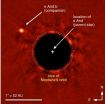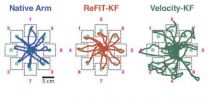Portable bed rails aren't safe - Groups ask FTC to ban false advertising
Devices claimed to improve safety are dangerous, reports Biomedical Safety & Standards
2012-11-19
(Press-News.org) Philadelphia, Pa. (November 19, 2012) – Portable bed rails marketed to "make any bed safer" actually increase the risk of injury and death, according to an article in the November 15 issue of Biomedical Safety & Standards (BS&S). A newsletter for medical device safety professionals, BS&S is published by Lippincott Williams & Wilkins, a part of Wolters Kluwer Health.
Two consumer watchdog groups have requested the Federal Trade Commission (FTC) to order one manufacturer to stop making false advertising claims regarding the safety of its portable bed rail. A front-page feature in BS&S reports on the request and provides background on the safety concerns related to the use of such products.
Bed Rails Linked to Deaths—Request to Stop False Advertising
In September, two groups sent a formal letter to the FTC requesting that one manufacturer be stopped from making false safety claims for its portable bedrails. Last year, one of the groups petitioned the U.S. Food and Drug Administration (FDA) to ban marketing and order a recall of specific bed rail models; to assess the design and use of similar bed handle or bed rail devices; and to investigate the risk of life-threatening injury or death from entrapment, strangulation, or positional asphyxia and ban other devices as appropriate.
The request cites more than 525 deaths associated with bed rail use that have been filed with the FDA, along with more than 155 deaths reported to the Consumer Product Safety Commission (CPSC). There are multiple "entrapment zones" with the use of a bed rail, each with a risk of causing death by asphyxiation. This entrapment risk can be a fundamental feature of the design of the rail openings or may arise from how the bed rail attaches to the bed.
Meanwhile, the manufacturer continues to make safety clams, such as that its product "makes any bed a safer bed." In the petitions, the FTC is asked to order the manufacturer to stop making these unproved safety claims. Other portable bed rails on the market present similar safety issues.
Previous CPSC standards addressing bed rails for children and toddlers have led to sharp reductions in injuries and deaths in young children. However, the standards don't apply to products intended for adults—especially older adults, for whom falls are a common and potentially catastrophic event.
There's no evidence that side rails safely prevent falls, whereas other measures—such as lowering the bed and using anti-slip matting—are effective. "A fall with a bed rail in place is more dangerous than a fall without a rail, because of the change in trajectory of the fall," according to the article in BS&S.
Although hundreds of deaths have been reported, it is likely that the true number of incidents is substantially higher. Home users and even some health care professionals may be unaware that such events should be reported to the FDA or CPSC. (Or if they are aware, they may not be motivated to report.) The BS&S feature article concludes, "Given portable bed rails are often sold directly to consumers and through medical supply stores, consumer groups think the CPSC and the FDA, both of which have been petitioned for rulemaking repeatedly in these matters, should be taking action to regulate, force recalls, and effectively ban marketing and sales of the dangerous devices.
###
About Biomedical Safety & Standards
Biomedical Safety & Standards has been a key resource for reliable information in the areas of medical safety and standards for more than three decades. The newsletter updates biomedical technicians and clinical engineers on the latest developments in patient safety, standards, regulations, incidents, device recalls, and professional issues. Bi-weekly issues cover everything needed to stay current on technology, safety and risk policies, new laws and standards, and equipment maintenance. Regular features include reports on safety, hazards, and risk management; updates on class I and II FDA recalls and field corrections; briefings on the latest requirements for medical equipment and/or facilities; legal issues surrounding medical device safety; the latest news from government agencies; and new educational resources.
About Lippincott Williams & Wilkins
Lippincott Williams & Wilkins (LWW) is a leading international publisher of trusted content delivered in innovative ways to practitioners, professionals and students to learn new skills, stay current on their practice, and make important decisions to improve patient care and clinical outcomes. LWW is part of Wolters Kluwer Health, a leading global provider of information, business intelligence and point-of-care solutions for the healthcare industry. Wolters Kluwer Health is part of Wolters Kluwer, a market-leading global information services company with 2011 annual revenues of €3.4 billion ($4.7 billion).
ELSE PRESS RELEASES FROM THIS DATE:
2012-11-19
Hydrogen, the lightest element, can easily dissolve and migrate within metals to make these otherwise ductile materials brittle and substantially more prone to failures.
Since the phenomenon was discovered in 1875, hydrogen embrittlement has been a persistent problem for the design of structural materials in various industries, from battleships to aircraft and nuclear reactors. Despite decades of research, experts have yet to fully understand the physics underlying the problem or to develop a rigorous model for predicting when, where and how hydrogen embrittlement will ...
2012-11-19
"Our analysis shows that the Norse in Greenland ate lots of food from the sea, especially seals," says Jan Heinemeier, Institute of Physics and Astronomy, Aarhus University.
"Even though the Norse are traditionally thought of as farmers, they adapted quickly to the Arctic environment and the unique hunting opportunities. During the period they were in Greenland, the Norse ate gradually more seals. By the 14th century, seals made up between 50 and 80 per cent of their diet."
The Danish and Canadian researchers are studying the 80 Norse skeletons kept at the University ...
2012-11-19
SCOTTSDALE, Ariz. — A new cancer drug combination demonstrated significant improvement in overall survival of late-stage pancreatic cancer patients compared to those receiving standard treatment, according to results of a Phase III clinical trial led by physicians from Scottsdale Healthcare's Virginia G. Cancer Center Clinical Trials, a partnership with the Translational Genomics Research Institute (TGen).
Physicians at the Virginia G. Piper Cancer Center at Scottsdale Healthcare were first to design a clinical trial to determine the safety, tolerability and effectiveness ...
2012-11-19
Countless studies demonstrate the virtues of complete smoking cessation, including a lowered risk of disease, increased life expectancy, and an improved quality of life. But health professionals acknowledge that quitting altogether can be a long and difficult road, and only a small percentage succeed.
Every day, doctors are confronted with patients who either cannot or will not quit, says Vicki Myers, a researcher at Tel Aviv University's Sackler Faculty of Medicine. To address this reality, Myers and her fellow researchers, Dr. Yariv Gerber and Prof. Uri Goldbourt of ...
2012-11-19
TORONTO, ON – Astrophysicists at the University of Toronto and other institutions across the United States, Europe and Asia have discovered a 'super-Jupiter' around the massive star Kappa Andromedae. The object, which could represent the first new observed exoplanet system in almost four years, has a mass at least 13 times that of Jupiter and an orbit somewhat larger than Neptune's.
The host star around which the planet orbits has a mass 2.5 times that of the Sun, making it the highest mass star to ever host a directly observed planet. The star can be seen with the naked ...
2012-11-19
AUSTIN, Texas — "Zero- tolerance" policies that rely heavily on suspensions and expulsions hinder teens who have been arrested from completing high school or pursuing a college degree, according to a new study from The University of Texas at Austin.
In Chicago, 25,000 male adolescents are arrested each year. One quarter of these arrests occurred in school, according to the Chicago Police Department. The stigma of a public arrest can haunt an individual for years — ultimately stunting academic achievement and transition into adulthood, says David Kirk, associate professor ...
2012-11-19
The structure and processes of United Nations climate negotiations are "antiquated", unfair and obstruct attempts to reach agreements, according to research published today.
The findings come ahead of the 18th UN Climate Change Summit, which starts in Doha on November 26.
The study, led by Dr Heike Schroeder from the University of East Anglia (UEA) and the Tyndall Centre for Climate Change Research, argues that the consensus-based decision making used by the United Nations Framework Convention on Climate Change (UNFCCC) stifles progress and contributes to negotiating ...
2012-11-19
When a paralyzed person imagines moving a limb, cells in the part of the brain that controls movement still activate as if trying to make the immobile limb work again. Despite neurological injury or disease that has severed the pathway between brain and muscle, the region where the signals originate remains intact and functional.
In recent years, neuroscientists and neuroengineers working in prosthetics have begun to develop brain-implantable sensors that can measure signals from individual neurons, and after passing those signals through a mathematical decode algorithm, ...
2012-11-19
By fabricating graphene structures atop nanometer-scale "steps" etched into silicon carbide, researchers have for the first time created a substantial electronic bandgap in the material suitable for room-temperature electronics. Use of nanoscale topography to control the properties of graphene could facilitate fabrication of transistors and other devices, potentially opening the door for developing all-carbon integrated circuits.
Researchers have measured a bandgap of approximately 0.5 electron-volts in 1.4-nanometer bent sections of graphene nanoribbons. The development ...
2012-11-19
New nanoparticle tricks and resets immune system in mice with MS
First MS approach that doesn't suppress immune system
Clinical trial for MS patients shows why nanoparticle is best option
Nanoparticle now being tested in Type 1 diabetes and asthma
CHICAGO --- In a breakthrough for nanotechnology and multiple sclerosis, a biodegradable nanoparticle turns out to be the perfect vehicle to stealthily deliver an antigen that tricks the immune system into stopping its attack on myelin and halt a model of relapsing remitting multiple sclerosis (MS) in mice, according ...
LAST 30 PRESS RELEASES:
[Press-News.org] Portable bed rails aren't safe - Groups ask FTC to ban false advertising
Devices claimed to improve safety are dangerous, reports Biomedical Safety & Standards

